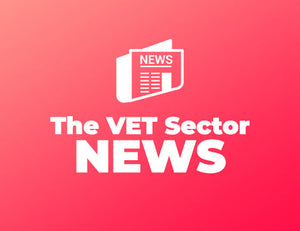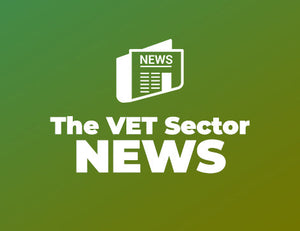The official Newsletter from Compliance and Quality Assurance (CAQA)
OUR FIRST NEWSLETTER
By Anna Haranas
Welcome to The VET Sector, our official newsletter for the Australian VET education and training sector.
This monthly publication is an initiative of the team at Compliance And Quality Assurance (CAQA).
The newsletter will be a vehicle for news and views on the current vocational education and training issues. It will cover some of the fundamental VET concepts, provide a number of professional development opportunities and we aim to support everyone who is involved in the Australian vocational sector.
I look forward to hearing from you and your thoughts regarding our VET sector.
Write to me at info@caqa.com.au
or call on 1800-266-160
Anna Haranas
General Manager
Compliance and Quality Assurance (CAQA)
WHAT SHOULD OUR TRAINING AND ASSESSMENT STRATEGY INCLUDE?
By Sukh Sandhu and Anna Haranas
A training and assessment strategy is a roadmap to how your RTO will deliver quality training and assessment to your students.
It should be written in a clear, easy-to-follow and concise manner.
As a minimum you need to include the following information:
- Qualification code and name
- The mode of delivery
- Characteristics of your learner cohort and explanation how their training needs will be met
- Explanation of how training and assessment will take place (when, what, how and where)
- Qualification packaging rules including elective and core units
- Course aims and outcomes
- Entry requirements set by the training package
- Pre-requisite or co-requisite set by the training package
- Admission requirements set by the RTO
- Explanation of how the special needs and requirements of each learner will be addressed
“TASs are your roadmap to deliver quality training and assessment to your students.”
- The pathway from (the course), the pathway into (the course) and employment pathways
- Relevant entry and exit points
- Industry consultation and how it has contributed to changes
- Information about having sufficient trainers and assessors
- Information about sufficient educational and support services to meet the needs of the learner cohort/s undertaking the training and assessment
- Information about learning resources to enable learners to meet the requirements for each unit of competency, and which are accessible to the learner regardless of location or mode of delivery.
- Information about sufficient facilities, whether physical or virtual and equipment to accommodate and support the number of learners undertaking the training and assessment.
- Training plan covering the sequence and structure of training and assessment delivery
- The delivery arrangement including types of assessment and teaching methods
- Amount of training and AQF volume of learning for each learner cohort
- Validation plan
- Licensing requirements Would you like to check your TAS against this criteria?
Download our TAS checklist, here
How to handle stress at audit!
By Sukh Sandhu
- Be ready!
- Have all information handy
- Follow directions
- Listen carefully to the auditor
- Ask for clarification if you do not understand the question
- Work with the auditor
- Have realistic expectations
- Be respectful, the Auditor has a job to do
- Make sure you understand the framework
- Have support staff or consultants available to help you!
“How good are your communication skills?”
By Anna Haranas
In order to be good trainers, we need to be good communicators. The ability to communicate effectively is important in relationships, education, and at work. Here are some tips to remind you of good communication skills. Communication starts with building rapport with the receiver, your students. Building rapport and engaging with people takes practice and much of it is based on intuition. It’s about creating a bond, link, connection, and understanding, in order to get your students thinking, feeling, reacting, and involved: –
Be approachable: a nice, friendly, open nature will make you more approachable. Use the student’s name: take the time to listen and remember people’s names and use them in your interactions. People will appreciate you taking the time to learn their name and its use shows they are important to you
Stay upbeat: be known for your positive attitude and willingness to help others.
Communication is transmitting the correct message: written words e.g. in presentations and student manuals, nonverbal cues e.g. body language, and spoken words.
We need to practice good communication skills by;
-
Making eye contact -whether you are speaking or listening, looking into the eyes of the person/people can make the interaction more successful.
-
Using gestures by including your hands and face in face-to-face communications -using smaller gestures for individuals and small groups, with gestures getting larger with larger groups.
-
Be aware of what your body is saying -an open stance with arms relaxed at your sides indicates that you are approachable and open to questions or hearing what people have to say.
-
Develop effective listening skills -one must listen to the other person’s words and ask for clarifications or summarise back to them the important points, as you understand them. Avoid the impulse to listen only to the end of their sentence so that you can get out the ideas or memories in your mind while the other person is speaking.
-
Excellent trainers have an extensive knowledge and skill base, they take the time to build rapport, and they practice good communication and listening skills. If you want to be an expert trainer, you need to be effective at all points in the communication process.
HAVE YOU READ THIS? IF SO WHY NOT SAVE A COPY IN YOUR TRAINER FILE AS EVIDENCE OF PROFESSIONAL DEVELOPMENT
Updates from the Australian Skills Quality Authority
By Sukh Sandhu and Anna Haranas
ASQA’s updated statement on TAFE SA (RTO 41026)
The Australian Skills Quality Authority (ASQA) has announced that it will revoke its 1 December 2017 regulatory decision to suspend ten qualifications from the registration of TAFE SA (RTO ID 41026). ASQA has today issued TAFE SA with a written direction to rectify minor outstanding non-compliances in relation to its delivery of vocational education and training.
For more information
https://www.asqa.gov.au/newspublications/ news/updated-statement-tafe-sa-rto-41026
Upcoming events
If you have not booked your training session yet, you still have time. ASQA is running a number of face-to-face and online briefings during May and June.
For more Information, please visit
https://www.asqa.gov.au/news-publications/events
NVCER News
Improving the VET Student outcomes
VET student outcomes can be improved if training providers take a more regional approach to their course offerings and institutional learning support. Improving participation and success in VET for disadvantaged learners shows that VET providers who focus more on immediate regional needs can also help improve opportunities for disadvantaged Australians and their communities..
The report presents three main areas for training providers to consider when developing a successful regional approach, drawn from thirteen case studies where both participation and completion rates were high for disadvantaged learners.
The findings from this report have been included in another new release, From school to VET: choices, experiences, and outcomes, which brings together recent research and data to highlight the often complex issues school students face when transitioning into the VET system..
For more Information, please visit
Other Events and News
Professional Development Events by ACPET
Message from the AISC Chair – April 2018
Copyright: changes to the Statutory Education Licence






